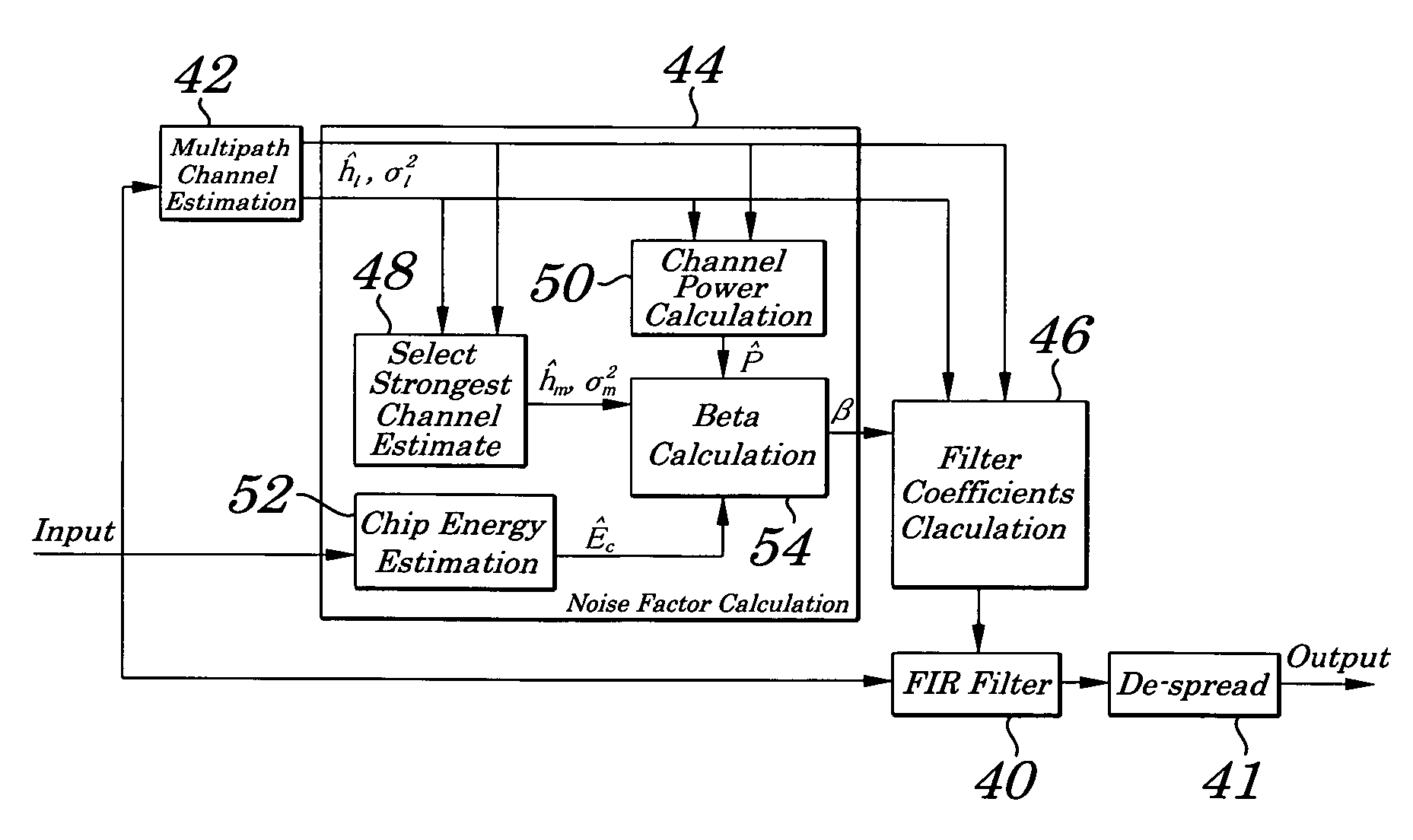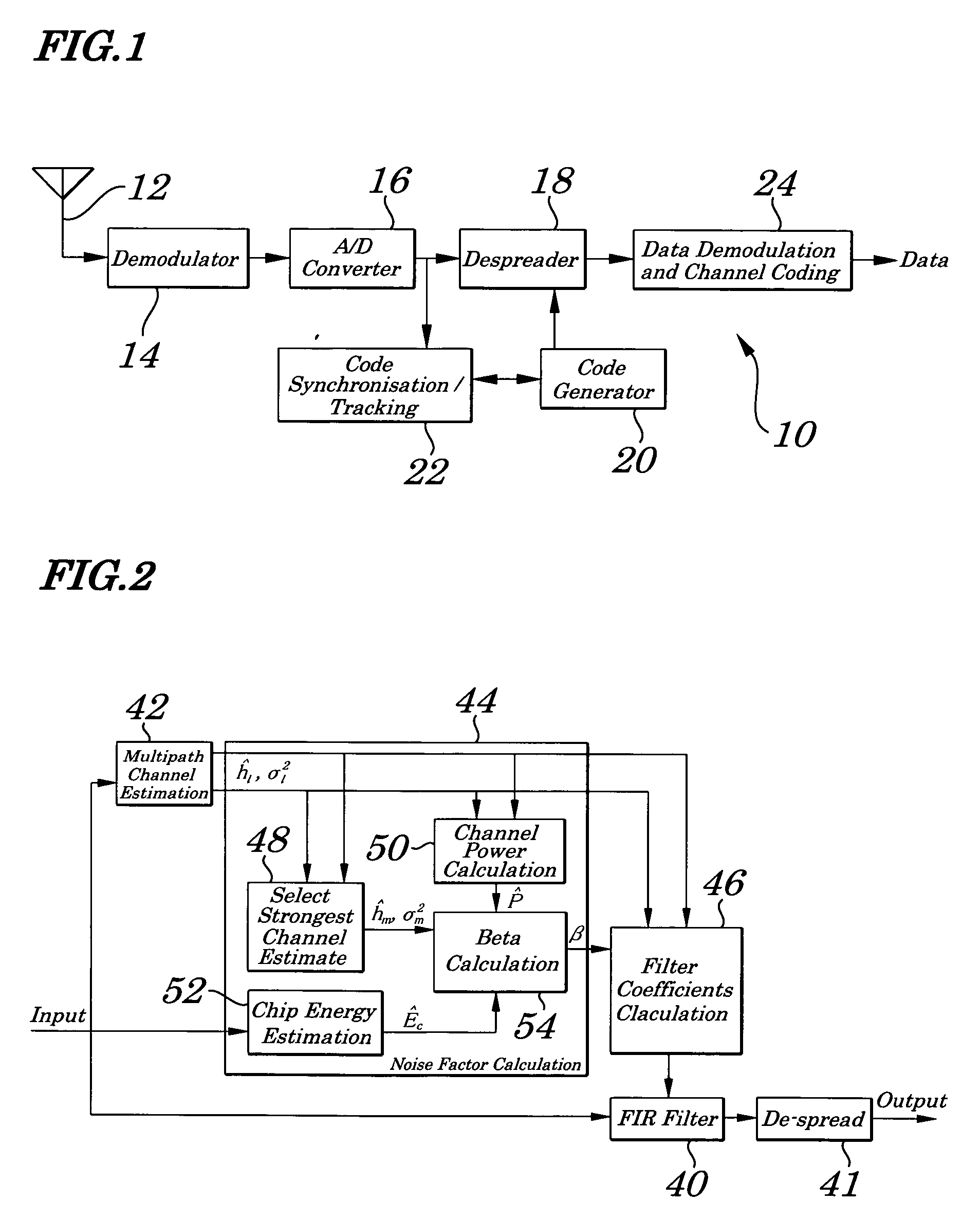Method of noise factor computation for chip equalizer in spread spectrum receiver
a spread spectrum receiver and noise factor technology, applied in the field of spread spectrum receivers, can solve the problems of loss of orthogonality, limited or no consideration of an optimal method of computing an estimate of scalar noise factor, etc., and achieve the effect of simple and practical implementation
- Summary
- Abstract
- Description
- Claims
- Application Information
AI Technical Summary
Benefits of technology
Problems solved by technology
Method used
Image
Examples
Embodiment Construction
[0035] The following description refers in more detail to the various features of the invention. In order to facilitate an understanding of the invention, reference is made in the description to the accompanying drawings where the method of noise factor computation for a chip equalizer in a spread spectrum receiver is illustrated in a preferred embodiment. It is to be understood however that the invention is not limited to the preferred embodiment illustrated in the drawings.
[0036] Referring now to FIG. 1, there is shown generally a spread spectrum receiver 10 including an antenna 12 for receiving spread spectrum signals, a demodulator 14 for demodulating the spread spectrum signals received at the antenna 12, and an analogue to digital converter 16 for digitizing the demodulated signals. The spread spectrum receiver 10 uses coherent demodulation to despread the demodulated signal using a locally generated code sequence from a code generator 20 in conjunction with a despreader 18. ...
PUM
 Login to View More
Login to View More Abstract
Description
Claims
Application Information
 Login to View More
Login to View More - R&D
- Intellectual Property
- Life Sciences
- Materials
- Tech Scout
- Unparalleled Data Quality
- Higher Quality Content
- 60% Fewer Hallucinations
Browse by: Latest US Patents, China's latest patents, Technical Efficacy Thesaurus, Application Domain, Technology Topic, Popular Technical Reports.
© 2025 PatSnap. All rights reserved.Legal|Privacy policy|Modern Slavery Act Transparency Statement|Sitemap|About US| Contact US: help@patsnap.com



